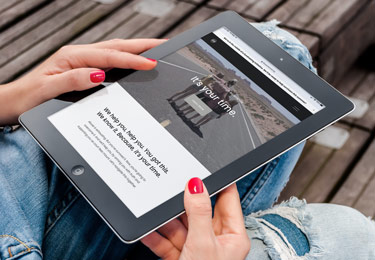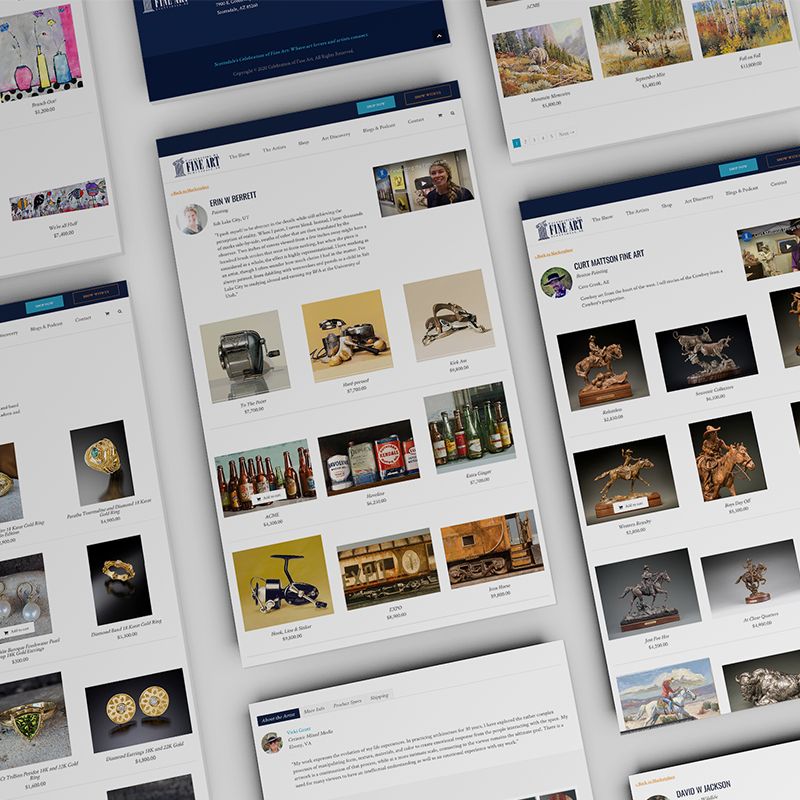Category: Advertising
A Holistic Approach to Building Brand Recognition


Brand recognition is that seemingly eternal marathon. Unless you’re Nike or Uber, it’s tough to stop running in search of the finish line where everyone knows you. And then when you become the Nike or Uber, your recognition efforts morph into reputation management.
To gain the brand recognition they’re looking for, business leaders may think they need to sink large sums of money into advertising, blow up their social media feeds or score some PR hits.
And then what if none of that works?
Recognition is one of the pillars of our proprietary H.A.L.O. business system, the one we started talking about in a previous blog. It’s one of the six challenges faced by every business. Why?
Because statistics indicate it takes up to seven interactions for people to remember a brand, yet it takes only seven seconds to make a first impression. That means that any efforts to build brand recognition that aren’t rooted in strategy could seriously backfire in the most detrimental of ways.
Which is to say, you could turn someone off before they even give you a chance to prove yourself – as a brand.
Where many agencies may dive directly into tried-and-true tactics promising to solve recognition challenges, we take a different approach. Our H.A.L.O system requires that we go deeper to understand the root causes of recognition challenges — and, spoiler alert, the root causes may be something other than what is expected.
Brands may not know where their audiences are, and even if they do know where they are, they might not be speaking to them in a way that fosters brand loyalty. That creates problems which result in inefficiencies and leads to losses and frustration.
Because banner ads and social media posts only gain traction if they include strategic messaging and are deployed in a way that meets a target audience exactly where it is.
We’ve seen it happen with a number of clients. We’ve watched them come to the table with revenue struggles, which we discover are actually tied to recognition problems, which — through our work — we find are rooted in outdated, misaligned messaging for an audience that isn’t fully understood.
As an example, of course.
Recognition challenges might also drive back to a subpar visual presence involving lackluster creative, missing or deficient SEO initiatives or misaligned relationships. Solutions may involve creating strategic partnerships, investing in insight-driven SEO strategies and reimagining the brand’s look and feel.
So, if it’s starting to sound like everything fits together, there’s a reason for that. Everything does fit together, which is the very essence of H.A.L.O. It’s a Holistic Approach that produces Leveraged Outcomes.
More than that, a well-researched strategy gives a “why” to every marketing move. And at WHYFOR, we only like the moves we can measure. Despite popular opinion, recognition can be measured.
We’ll show you how.
To learn more about how our proprietary H.A.L.O. business system can help your brand recognition, download our one-sheet.
H.A.L.O. Sets Us Apart


We’re not angels at WHYFOR, and we don’t think we are, so don’t let our fun wordplay fool you. H.A.L.O. is our system. It’s how we do what we do. It’s what sets us apart from every other agency out there.
And we figured it was time to pull back the curtain on it.
Because we don’t need anyone assuming it’s an actual halo. It’s not. H.A.L.O. stands for Holistic Approach Leveraged Outcomes. And we’re going to pull those concepts apart to make sure brands and the professionals leading them understand how and why our approach to marketing is different and, most importantly, effective.
For starters, H.A.L.O. is not a marketing scheme. It’s not a plug-and-play or a template. It’s a business system, one that looks at an organization or brand on the inside and out, from operations to communications and everything in between. One that examines a brand’s DNA, analyzes its audiences and researches the best way to reach them.
And that’s just the beginning. Actually no, that’s all more toward the middle. That’s more like the thick of it.
H.A.L.O, from the get-go, recognizes that every business, every brand, every organization faces the same five challenges. No matter what — business leaders face the same five issues. (Yes, that was worth repeating).
And each of those five issues have the ability to impact revenue, which is a universally accepted goal. Increase revenue, period. It’s what every sales meeting boils down to, what every forecast points to, what every organization needs for growth and prosperity.
Our H.A.L.O. system is also our logo — that geometric shape with a Y in the middle. It’s the platform we use to connect the dots, to show business leaders how one issue influences another and how any deficiency can negatively impact revenue. If we could have two logos (which we’d never advise) it might include a light bulb, because those are the moments we experience with business leaders as we work our way through our H.A.L.O. system.
Our approach boils everything down instead of building everything up. It bypasses all the marketing buzzwords and formulaic philosophies used by most agencies in favor of terms everyone understands.
We use words like “relationships” and “retention,” “recruitment” and “reputation.” Clean, simple, universal concepts that can easily be understood across any organization.
Because simple doesn’t mean “less than.” To us, it means it’s accessible. And accessibility is key to adoption and adoption is key to success.
So over the next few weeks, we’ll dive into each of the five issues we know every business and every brand is facing. Yes, we understand there is nuance and context to different industries and different products, but the root issue is always one of five things.
We’ll unpack it all and illustrate how our H.A.L.O. system unearths the obstacle and ties together tailored solutions. So, check back for our next installment, and until then, take a look at our H.A.L.O. one sheet.
It summarizes our unconventional approach.
Purpose Statements Guide Business Relationships


Life is full of questions, even if you don’t live with toddlers. Can I make a U-turn here? Why are acid-washed jeans popular again? How did I spend so much money on that?
And (gulp) what is my purpose?
That last one is a big one. It’s one every business asks, too. But the real question is, why should the CEO of one business spend even one second caring about the decided purpose of another organization?
Because that purpose will very likely define the spirit of any relationship he or she forms with that company.
Purpose statements, like values, should serve as a guiding force. It should be the bottom brick on every professional pyramid. It should reflect the honest commitment behind every company.
It should. It doesn’t always.
Purpose statements are sometimes developed, fine-tuned and cast aside. Sometimes they don’t even see the light of day as certain businesses run out of steam after crafting value statements and taglines. But purpose is the critical fuel that drives inspiration and moves ideas forward.
Empower people to succeed.
At WHYFOR, our purpose is to empower people to succeed. Four words weighted with context and passion. Not a manifesto, not a billboard, not a schnazzy, buzzword-filled tongue-twister that leaves people confused and clueless.
Just a simple truth.
What does that mean? It means we’re not here to make clients feel uneducated or out of touch. Instead, we’re here to make them feel stronger and more confident. We’re here to make sure they understand the “why” behind the strategies we develop and ensure they can digest the analytics derived from every move we make.
Because if we can’t measure it, we just don’t do it.
And since we’re invested in the success of our clients, we take the time to understand how success is measured — not by us, by our clients. We’re successful if our clients are. That’s how our whole purpose works.
One of the more rewarding opportunities we have in client relationships is helping them find their true purpose. It should come as no surprise that a number of brands and businesses don’t know their actual purpose.
They think they do. And they might be close.
But they benefit from taking the time to unravel who they are and what they offer as a means of uncovering their authentic purpose — their bottom brick. Everything builds off of it. We would know.
Our purpose, empowering people to succeed, gives us license to treat clients in a different way than other agencies do. Here, clients aren’t ranked by notoriety or retainer. They’re not evaluated and distributed based on importance. We’re all in, every time.
And it means we feel comfortable working with clients to build their own in-house marketing and sales teams or strengthen the ones they have. Because we want to empower them to succeed, with or without us.
Isn’t that something?
Looking to feel empowered for success? Let’s talk.
The Real Value of Integrity


It can be difficult to feel integrity. A lot of companies list it as a value — as in, they value integrity among their staff and as part of the relationships they have with clients. But how do you know, for certain, that such an aspirational concept is real, beyond just letters on a page?
Through experience.
Integrity is equated to authenticity, to courage, to success, to character — and Warren Buffett has classified it as the singularly most important trait needed when hiring an employee. There’s a widely circulated quote about integrity by C.S. Lewis that reads, “Integrity is doing the right thing even when no one else is watching.”
That’s what we’re doing over here at WHYFOR. Quietly exercising our integrity.
We do it in a lot of ways. By doing what we say, by refusing to nickel-and-dime, by creating work that works in new ways instead of doing work that’ll do, and by investing in outcomes with an understanding that success is a mutual thing. It’s what any client would want from a strategic marketing partner.
A client looking for the kind of partnership that stands out for the novelty of its passion, honesty and commitment may find that type of professional integrity rare but beneficial to have over the long haul.
Integrity, it seems, walks softly. But not without confidence. Because doing the right thing is always going to be the right thing.
It’s part of the reason we’re proud of our affiliation with a non-profit founded by one of our staffers. For Your Record launched late last year and in June will begin offering financial grants to domestic abuse survivors to cover the costs associated with court filing fees and public records request fees.
The organization needed a mailing address that wasn’t a home address, for a variety of reasons. And WHYFOR never hesitated, for a different variety of reasons — the first being our integrity.
It’s just how we operate. Supporting a project that will support a community in need means we’re contributing to the greater good, which is one of our missions. Because we’re more than taglines and email campaigns, as we’ve mentioned.
This is how we’re built. WHYFOR is a company that reflects the spirit of its values — one that works hard, thinks big, gives back and follows through. Other places can say that, too. They can say it. But do they mean it? Do they live it?
Not all of them. Words, even ones labeled “values,” can be said or written very easily — even when they’re hard to come by. The writing or the saying is the easy part.
The living is the hard part. That’s where the effort is. But for us, it takes no effort because it’s genuine. And isn’t that the best indication of a perfect fit — where values embed themselves so seamlessly that they can’t be sidestepped even if someone tries?
We think so.
Results Bubble Up From Actionable Values


As a business leader, you care about results. We understand that. But we also believe business leaders care — at least a little — about how those results are achieved.
At WHYFOR, our results are a direct byproduct of our values. Think of our values as critical ingredients, and our results as the main dish your taste buds can’t even believe they just experienced.
We’re not a drive-thru branding agency. There are enough of those. We’re strategic partners who filter our values through our work, every day, to deliver the kind of results that actually matter, ones that can stand alone in their impact and sync with the revenue-related progress you’re seeing on your side.
We don’t bore you with inconsequential stats or measurements designed to add fluff. Neither of us have time to waste. We are purposeful, which means we only do measurable work and we always make sure to actually
measure it.
Our quarterly business reviews, or QBRs, are a perfect example of that. They offer clients an in-depth analysis
of what’s working, to what extent, and what isn’t. We use analytics to celebrate wins and discuss new paths
forward where they’re needed, because we’re firm believers that solutions are often found by understanding what’s not working.
And, because we want to influence the world we want to live in, we’re more deeply invested in the client work we’re doing as compared to quick-serve marketing agencies. We’re choosey, and our commitment to the work, and client success, reflects that. When clients succeed, and our work works, it means the world is a little bit better.
And that’s incredible.
To get there, we consider everything. It’s part of our intrepid nature. The strategy we develop with clients is an all-in affair, allowing us to collectively uncover every possible potential, every hiccup, every upshot — all of it. When we do that, the strategy is battle tested making it that much stronger.
All of that hints at our aversion to settling. It’s not how we’re wired. We like to try new things, look for new tools, see if something might work better – even if something is already working. Because better is better. Isn’t it?
It is that intrepid nature that inspires us to take action. Deadlines, to us, aren’t suggestions. We know they’re part of a bigger plan, so we follow through on every, last meticulous detail. We recognize that we’re just one tennis ball a client is juggling among others, which is why we do what we say we’re going to do.
But don’t mistake our work ethic for a “yes-man” affliction. That’s not us. As the saying goes, you don’t know what you don’t know sometimes, and we believe that phrase swings both ways between us and a client. Influencing a better world may require hard conversations, but we’re here for it.
Because kicking a can down the road, and avoiding challenging conversations, does nothing to positively influence results. And results are what matters.
Learn more about how our values-driven work can help you improve your results.
Right Turn: An Avenue To A New Audience


A braid is only a braid if each of its three sections are woven together just right. If one section is off, you can see it — you can even feel it. We didn’t expect to compare WHYFOR’s proprietary L.A.B.S. branding process to a bohemian hairstyle, but here we are.
The Avenues Plan, the third section of hair for that beautiful rhetorical braid, brings all of our branding work home because it weaves together the intel we gained from our Anatomy Profile and our Audience Personas. By now, we understand a brand’s DNA and we know who it wants to talk to. The Avenues Plan strategizes the route.
It’s exactly what we did for the Celebration of Fine Art, a juried, 10-week art show in Scottsdale celebrating its 31st year of connecting art lovers with artists as they work. For 30 years, CFA hosted thousands of artists and welcomed tens of thousands of collectors who would gather under white tents and witness the creative process, live.

A global pandemic prompted a new approach, as gatherings were limited and social interactions needed to be distanced. CFA would continue as it always had, while following suggested guidelines, but it needed to reach out to a new audience — one that felt at home collecting art online — in order to sustain the annual show and expand its influence in the art community.
So, we went to work creating an online marketplace, an integrated shop CFA had long considered but had realized was now necessary for future success. We researched what that audience looked like, what it liked, how it engaged and purchased, and we built a platform that met that audience exactly where it was.
Because the online art-buying world is different than the in-person one. Different audiences use different avenues.
WHYFOR’s Avenues Plan dovetailed with CFA’s content marketing plan for maximum exposure, included artist relations to recruit the show’s participants to create shops online, and involved the development of tutorials and instructions that detailed how to build those shops. All of it came together on an expedited timeline, too, so the marketplace could launch during 2020’s holiday shopping season.
So, how did it go? Pretty great.
After coordinating messaging that announced the launch of CFA’s new online store across print, digital, email and social channels, artists and collectors responded in a way that helped WHYFOR and CFA exceed the goals that were established before the launch.
Would stats be helpful? Our case study tells the story.
How It Feels to Delicately Slice and Dice an Audience


The word “audience” can be deceiving, especially when it comes to branding. Audiences, in general, are made up of dozens, hundreds — and if you’re the chart-topping pop star of the moment — thousands of people in one place.
At WHYFOR, we narrow audiences down in a strategic way. We hone in on a target, examine a particular slice and build an informed, research-based marketing plan around individual types of audience members. We talked about the process recently by explaining our work with innovaTel, a national telepsychiatry provider that partners with community organizations to improve access to care.
But, hearing from innovaTel directly might better explain the experience, its benefits and how the work can be used once it’s completed. Lauren Lashbrook, innovaTel’s director of strategic partnerships, reflected on the Audience Personas process.
And, full disclosure, we’re blushing a bit.
Q: Where were you, as a brand, before beginning the Audience Persona process with WHYFOR?
A: Prior to the Audience Persona process with WHYFOR, we had not done any formal brand work with an agency partner. We had done all of our marketing in house and made some updates over the years to evolve our brand with the industry, but had not done any persona-specific work.
Q: Why did you feel it was important to go through this process?
A: As our company has grown and evolved, we have really made a name for ourselves in our industry; however, we really wanted to take our brand to the next level. We are known for our clinical excellence and wanted all of our marketing and branding to align with that clinical excellence.
Q: What struck you about the process?
A: I had met with a number of agencies prior to working with WHYFOR and was really looking for a partner that understood our business model, target markets and, most importantly, our mission as much as we did. After handling all of our marketing internally, it was a bit intimidating to look for an outside partner because we’re so close to our business model and, to that point, we had been the experts at what we do, day in and day out. I was worried that there may be a disconnect, but that was not the case at all with WHYFOR. They proved that right away to us. It was clear that they understood our business model and many times I found that the WHYFOR team was completing my sentences and often joke that they are reading my thoughts. I truly feel that WHYFOR is an extension of my team, not an outside agency.
Q: Do you recall gaining new insights about the audiences you’re speaking to as a result of the persona research?
A: Absolutely! Taking such a deep dive into our audiences was incredibly valuable. The WHYFOR team spent a tremendous amount of time understanding the pain points of each of our audiences, and by doing this work on the front end, it allowed us to use this persona research to craft all of our marketing messaging specific to each individual audience. All of our partnerships are customizable and much of our success has been due to the fact that we really do understand the pain points of our customers. Through our work with WHYFOR, our marketing and branding now truly paint the picture of how and why we do this work.
Q: What did you think of the end product?
A: It was fantastic! The end product really gave us a playbook for our marketing strategy. We know our customers inside and out; however, our marketing didn’t necessarily reflect that and now that work that we have done together helped us shape our entire marketing strategy for this year.
Q: How do you plan to use this analysis?
A: It really gave us a roadmap for our entire marketing strategy. It was also very helpful to share with our entire team, our board and then also new hires, specifically on the sales and marketing side.
Q: Have you seen its benefits, yet? If so, how?
A: Absolutely! We use this as a working document for all of our marketing and sales strategy planning. This was a fundamental tool in updating our website and all of our marketing content. Our industry is not a one-size-fits-all landscape, and by deeply understanding our personas and target markets, our marketing will now reflect the pain points and relevant solutions that we can offer our customers through our partnerships.
I also used this tool for new sales representatives we brought on board so they can really understand our DNA and the pain points of our target customers and how our solutions uniquely align with their needs.
WHYFOR can do the same for you. Let’s see how our Audience Persona work can benefit you.
Understanding Bob: Audience Personas At Work
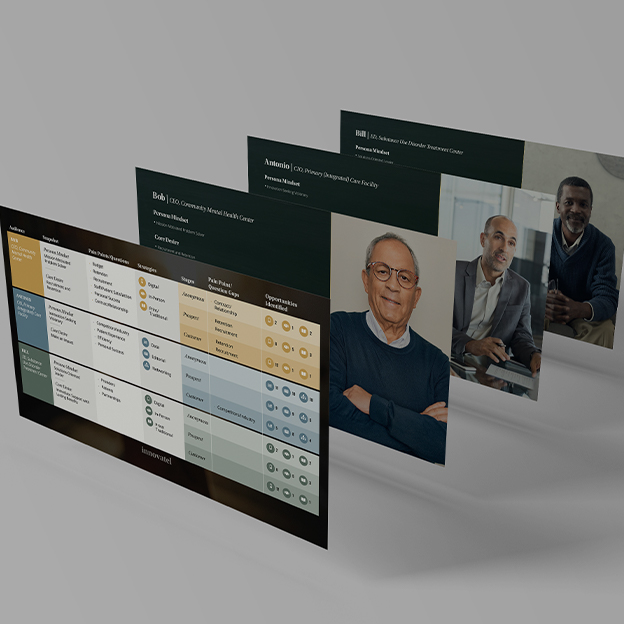
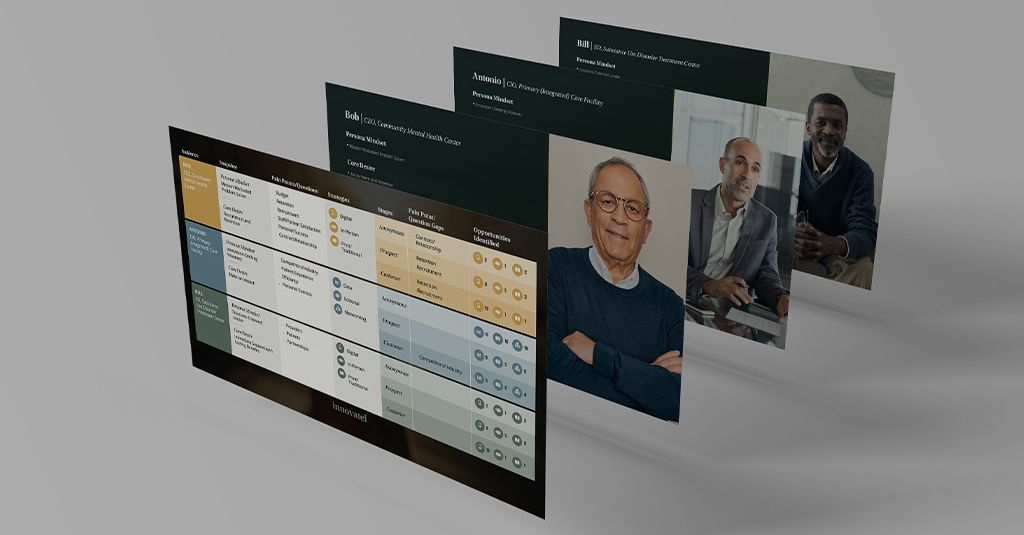
When we talk about “audience work,” that might sound vague. It might conjure a scene of someone tapping a hot mic, tossing out jokes, trying to warm up a studio full of fans awaiting a headliner.
We’re not talking about an opening act. We’re talking about targeted outreach informed by an in-depth analysis of who a specific brand or organization is trying to reach. There’s a big difference.
Much like opening acts like to tailor their set to the type of audience that appreciates the headliner (think: skip the ballads for the headbanging crowd), brands need to tailor their messaging to speak to the challenges, pain points and solutions their audiences are experiencing. This gets to the heart of WHYFOR’s Audience Personas.
It’s how innovaTel, a national telepsychiatry provider that partners with community-based organizations to improve access to care, better understands Bob.
And who’s Bob? He’s a composite character we developed during our Audience Persona process to help us, and innovaTel, get a better picture of what matters to someone managing a community mental health center.
And we didn’t just pluck him out of thin air. That’s what magicians do. Instead, we determined target audiences during a thorough workshop with innovaTel and gathered intel through a series of validation interviews from other Bob-types — none of whom were named Bob — to understand the pressures, goals and opportunities a professional in this field faces when trying to deliver care and improve outcomes for patients.
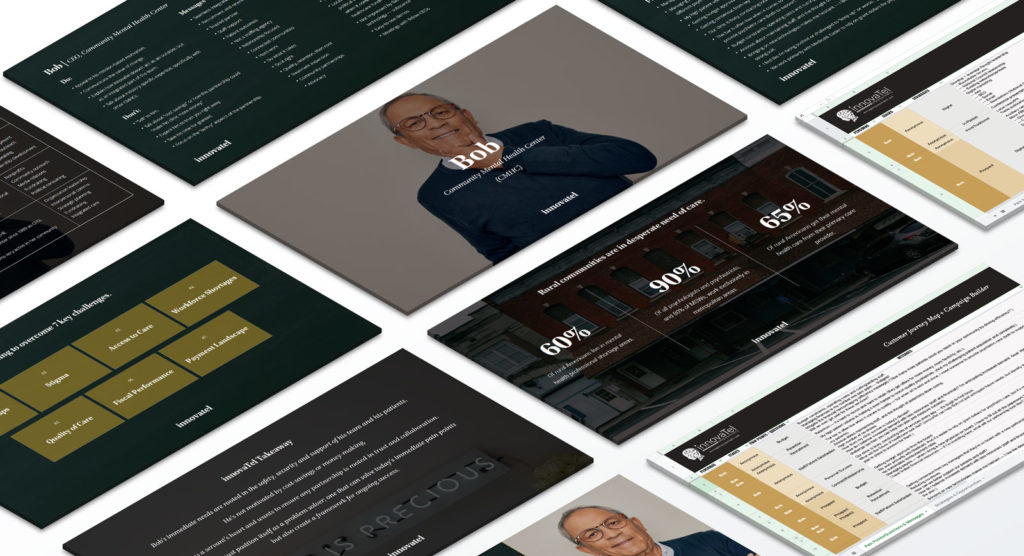
It was during those interviews that we discovered how Bob likes to receive information, what type of information he’s interested in receiving and how the information helps him, and other decision makers on his team, move forward with a new partner. Every Bob is different, but we were still able to see themes emerge that allowed us to create an illustration of a valuable audience specific to innovaTel.
And for innovaTel, we went through the same process with two other audiences because we understand the importance of nuance.
With those characters outlined, and then colored in thanks to first-party research, innovaTel came away from our Audience Persona work with a more informed visual of exactly who they’re talking to, and exactly how they should approach each of the audiences they’re trying to reach.
Like magic. Or an opening act that makes sure it knows who it’s playing to.
How well do you know your brand’s audience? Let us introduce you to Audience Personas.
Big Game Blowoffs: No Guts, No Glory
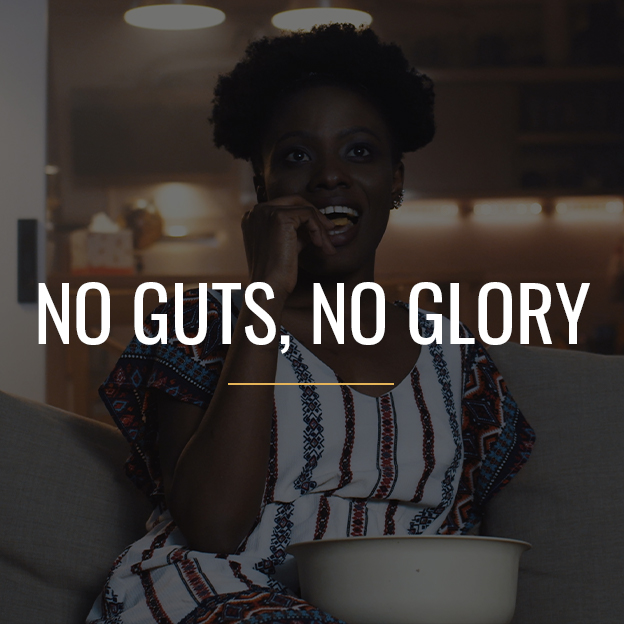
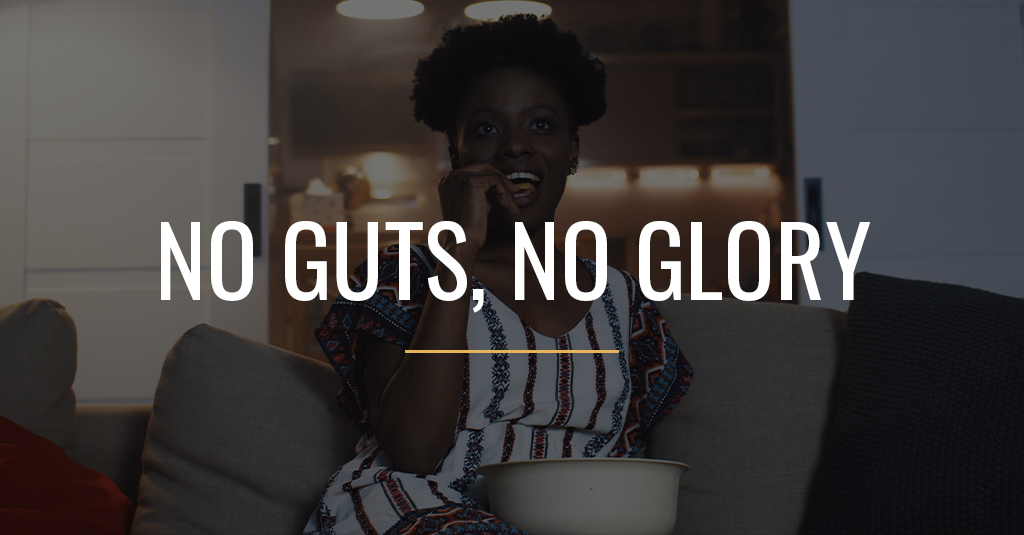
You can’t see me right now, but I’m starting a slow clap. Because it’s exciting to see brands that are daring enough, even during “unprecedented” times, to tackle a marketing landscape that has become so tricky it has scared the gnarly, big dogs from the yard.
I’m talking about the Big Game. Specifically, brands like Chipotle, Mercari and Fiverr. Those Big Game newcomers are seizing an opportunity to have millions of eyes on them for 30 whole seconds for the low-low price of $5.5 million, despite the “let’s-walk-on-eggshells” energy out there right now.
But, more importantly, those guys have a firm grip on who they are. That’s why they can afford to dive into this thing as soda and beer kingpins opt for the sidelines. For the record, we’re cool with Bud sitting out since they’re funding vaccines and all, but what has you so scared, Coke? I’d be more spooked about staying on the bench — looking at you, Pepsi.
Why? Because the companies that don’t take their foot off the gas during recessions score — pun somewhat intended. Statistics show brands that lean in and push ahead with growth and investment experience 277% more growth than brands that pull back.
That’s why $5.5 million, if you’ve got it, is the easiest decision ever. It’s impossible to argue with that kind of success.
Yes, Chipotle — spend that cash! Because I’ve seen what happens when companies decide to double-down during economic downturns instead of sitting in a bunker and waiting for the storm of the moment to pass.
But let me be clear — as a fiscally responsible branding veteran, I’m not advocating for companies to start throwing cash around that they don’t have. There’s strategy in everything, and it all begins with authenticity, which by its very nature can’t be engineered.
The CEO of Mercari, an online marketplace advertising in the Big Game for the first time this year, totally gets what I’m saying, and I’ve never even met the guy. He told Variety that his team went with its “gut and heart” when it developed their spot for the game.
Isn’t that where authenticity lies? Inside, in a brand’s gut? The answer is yes.
It’s why, at WHYFOR, we believe so ferociously in working with brands to ensure they understand their anatomy — the “who” and the “why” of what they are. When companies know that, and embrace it, they don’t have to walk the tightrope that so many of today’s brands are trying to do.
They want to be light-hearted and funny, but not disconnected. They want to match the tone of the nation, but don’t want to come across as somber. They don’t know how to support causes because they don’t even know if they believe in them.
That tightrope is a dangerous, ambiguous gamble. Authenticity is the safe bet, even when it costs $5.5 million.
As far as I’m concerned, first-timers like Mercari, Scotts Miracle-Gro, Chipotle and Fiverr are in the driver’s seat this weekend, no matter what. I mean, we’re talking about them, I’m already slow-clapping them, and I’m about to Google Triller — because they’re advertising, too, and I’m not ashamed to say I’m lost on who the heck they are.
But after Sunday, everyone will know.
It’s Effective. But What Does Anatomy Profile Work Feel Like?


After diving in and completing an Anatomy Profile with WHYFOR, Pine Canyon — a luxury golf community in Flagstaff, Arizona — experienced pretty remarkable results.
While doubling down during the pandemic on its new-found identity as a refuge for its owners and members, Pine Canyon crushed its sales goals (by 53%), saw a spike in SEO traffic (248% increase) and realized a 1,993% return on investment for its marketing efforts.
Deanna Keck, designated broker and sales executive for Symmetry Realty Brokerage at Pine Canyon, participated in the entire process. So, we asked her what she thought of it. Here’s what she said.
Q: What was the Anatomy Profile process like for you? What was your perception?
A: It revealed people to us. We always knew we were drawing from five different zip codes. And we knew friends wanted their neighbors close. A lot of people consider Pine Canyon summer camp. I think it helped us look inwards at just a lot of things we were doing to attract those people and to raise the bar.
If we follow these steps and really reflect on who our audience is, and the anatomy of who we are, we can take Pine Canyon to the next level.
Q: What do you think was the most beneficial element of the process?
A: It gave us a real roadmap of where we were and where we wanted to go. It always gave us the opportunity to bring us back to where we needed to be. We sit where we are today with the refresh of the brand … it allowed for Pine Canyon to set the bar extremely high.
Q: How do you think the work done during the Anatomy Profile impacted your external audiences?
A: We did a really great job of painting a beautiful picture for people to fall in love with. And we had the right people in the right seats to sell the lifestyle.
Q: How did it change how you do business, if it did?
A: I 100 percent believe in what the process brought to us and it really revealed a lot about our company we needed to change. And if other brands are committed to self-reflecting, they’ll get to where they want to go. This is a process for someone who is dedicated. Someone who says, “I want to do everything I can do to get there.” That’s the buy-in you have to get. I know it will make business better.
There are a lot of things that come through the process that are like skeletons in the closet. If you don’t deal with it, you can’t move forward. “Are you ready to make this commitment?” This is hard work. This is like therapy. And therapy is not fun. But when you work through it all, it’s amazing where you can be on the other side. If you can’t approach it that way, you don’t benefit from it.
… and we do believe we heard a mic drop right there, so we’ll wrap it up.
What can WHYFOR’s Anatomy Profiles do for your organization?
Connect with us and let’s find out, together.

